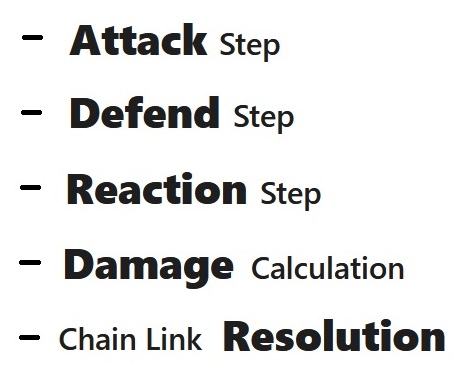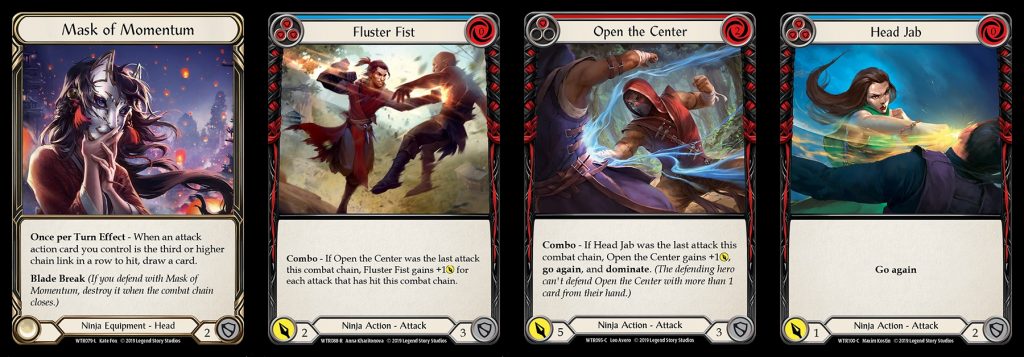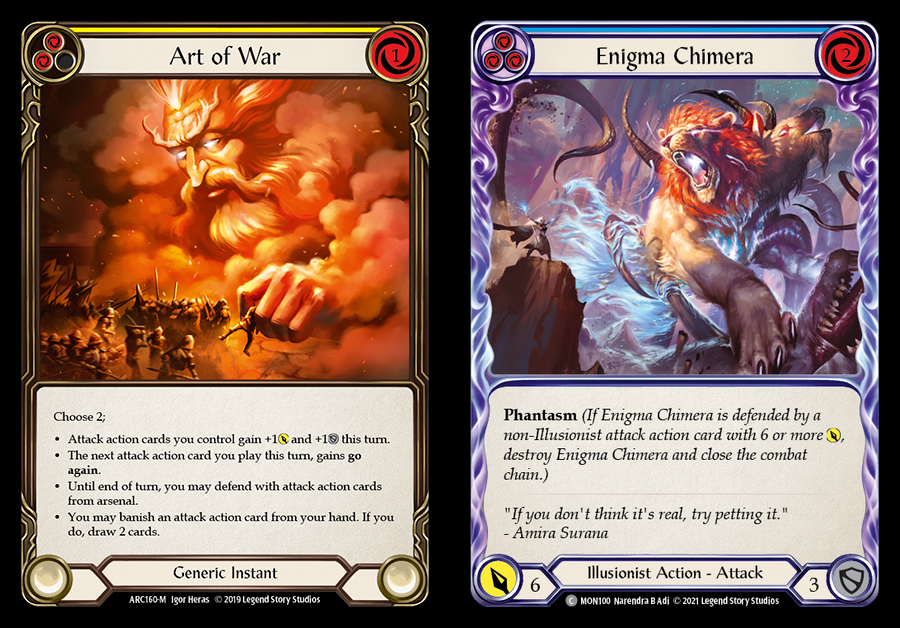Careful Combat Chain Considerations
Great news everyone. Flesh and Blood is getting more and more players by the week! We notice it in our Blitzed community chat and tournaments: The Blitzed battles of this month will be played by a whopping twenty-three FABulous people! BIG welcome to all new players, I hope you’ll all soon feel at home.
With so many new people joining our ranks, while the more experienced players are also still discovering new cards from Monarch, we will all encounter situations that we haven’t seen before. In times like these it is good to take a step back and have a good look at the Rules, to truly understand them by heart. In this article there will be some essential basic information followed by some more advanced moves. You can use this knowledge to your advantage!
While we zoom in and out on certain aspects of the game, I would like to mention in advance that I do not write everything in full detail. So I encourage everyone to take a look at the comprehensive rule book, which can be found on FABTCG! In this article I’ll zoom in on the combat chain and chain link resolution step specifically.
Turn
A turn consists of three phases: Start of Turn – Action Phase – End of Turn. It is important to remember that neither player has priority during the Start and End phases, these are only for standard procedures and triggers. And without priority you don’t get to play your cards! All the good stuff happens during the Action Phase: After the player whose turn it is gets their 1 action point, they get to use an ability or to play a card such as a (non-attack) Action, an Instant or Attack. When an Attack-card is being played the Combat Chain opens.

Combat
There are a couple of steps to go through during a combat: Attack – Defend – Reaction – Damage – Chain link resolution.

The first two steps are fairly straight-forward: The turn-player plays an Attack, and the other player gets a chance to Defend with their Equipment-cards and cards from their hand simultaneously (but not Defense Reaction-cards yet!). Both players then move to the Reaction step, where the Attacker can play Attack-Reactions and the Defender can play Defense-Reactions. <Quick shout-out to SWDestiny 2017 Dutch National Champion Kenny to think creatively and ask important questions; but the defending player can not play Attack Reactions or vice versa.> There are some interesting aspects involving Layers during the Reaction step, but this will be addressed another time in another article (Or for the curious readers, more information in the Comprehensive Rulebook.)
Chain link Resolution
During Chain link resolution, if an Attack with ‘go again’ resolves you get an action point and you can choose to remain in the same combat chain by playing another attack afterwards. Each individual attack (and their combat steps) is called a chain link. If you want to play a (non-Attack) Action card or activate an ability, the combat chain can not continue. You can also choose to close the chain manually, if you desire. If you have an action point and wish to play another Attack, you can open a new combat chain afterwards. There are a couple of classes and situations where this is incredibly important!
First I’d like to mention Ninja, because this is where I personally learned about the combat chain. Combo cards need to be played in the same Combat chain if you want them to trigger their effects. So if you want to use Goliath Gauntlet to give +2A to the next 2-cost attack or play a (non-Attack) Action-card you can’t do it in between the Attacks, because the combat chain would reset! Unless you manage to play that Action-card as an Instant somehow.

Next up is Illusionist. Many of their attacks have Phantasm: If they are defended by a (non-Illusionist) attack action card with power ≥6, the Phantasm attack is destroyed and the combat chain closes immediately. Even if the Phantasm attack has ‘go again’, there will be no chain link resolution step where the ‘go again’ will trigger. Moreover, there is a very interesting situation possible after a Phantasm attack is defended by an attack with power 5. The Illusionist player continues the combat chain by playing a second Phantasm attack, and the Defending player announces no blocks, but proceeds by playing an Art of War (Instant) during the Reaction step: choosing the option “Attack action cards you control gain +1A and +1D this turn”. This immediately triggers the first attack’s Phantasm, because the defending 5-power card, which is still located in the combat chain, has now become a 6-power card, even though it is in an earlier chain link. The combat chain is closed, whiffing the second attack entirely and leaving the Illusionist player in tears. This is one of the situations where you want to manually close the combat chain beforehand and reopen a fresh, new one.

There’s also a nifty little trick that an Illusionist player with Luminaris can do. When they play an Illusionist-Attack by pitching a Blue card, it means the attack will not have ‘go again’. However, if they manage to pitch a Yellow card BEFORE the Chain link resolution step, such as during the Reaction step (to pay for their Hero-power for example), the Attack will now have ‘go again’ and they can attack with a Spectral Shield token and/or another herald afterwards.
Another example of the combat chain being very important is when the defending player is using Arcanite Skullcap to defend your attack. If you don’t close the chain, they can’t use it to defend your next attack because it doesn’t return to the equipment slot yet. Two of our beloved community members, Nick and Jonathan encountered this situation and have made a video about the combat chain, which can be found on the OnlyFABS youtube channel.

Finally I would like to mention one of the Mechanologist weapons: Plasma Barrel Shot. Its damage significantly ramps up the more times you’ve “boosted” in a turn, which is a go again-mechanism. It is important to note that this gun requires a steam counter in order to attack, but putting a steam counter on it is an Action. You DO NOT want to make the mistake of playing all your boost-cards in the Combat Chain, and then close it by putting a counter on the pistol, followed by an Attack of 1. So make sure to have that steam counter ready if you want to blow someone up instead of giving them a tickle and a good laugh!

Final words
This were some examples of little subtle choices in FAB that can result in HUGE differences. If you know the rules well, it will be of big advantage to you. Hopefully you’ve learned something and enjoyed the article. Thanks for reading and see you next time!